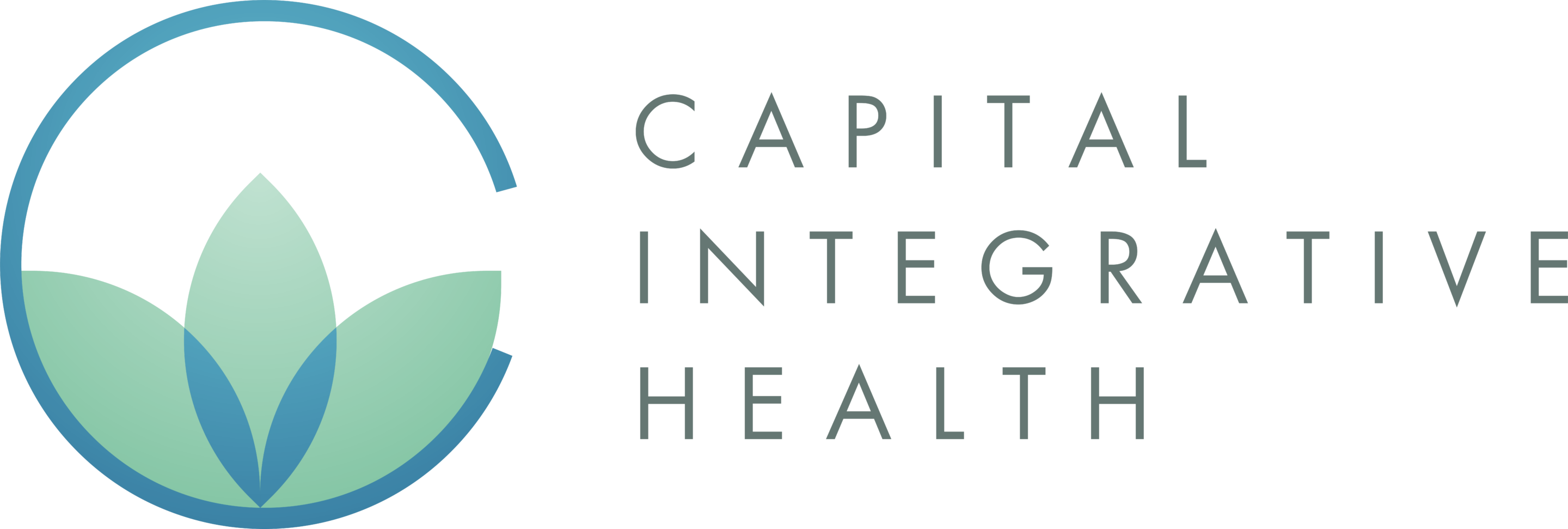Calm in 20 minutes.
The state of your nervous system determines how you feel in every moment.
There are two branches of the nervous system: the sympathetic nervous system activates the fight or flight response, while the parasympathetic nervous system helps us to relax and recover.
The fast pace of modern life has many of us living in a constant state of sympathetic nervous system arousal. This chronic, low-level stress can lead to burnout, overwhelm, anxiety, depression, an impaired immune system, and disease.
Learning how to shift the “default” nervous system state to a calmer one can have profound and immediate impacts on your life, happiness, relationships, energy, and health.
Here’s how to make the shift…
Science-backed “micro-calm” techniques
It can be hard to fit mindfulness practices like meditation into a busy, modern life.
We’ve spent the last decade collecting tiny mindfulness techniques that can be practiced quickly, easily, and on the go.
We call them “micro-calm” techniques.
Most of the techniques take just a few seconds. With some practice, they make it easy (and eventually automatic) for your nervous system to shift into a calm state in the middle of a hectic day.
Below are three of our favorite “micro-calm” techniques to melt stress, relax your nervous system, and get in the moment in a matter of seconds. At the end of this guide, we’re going to ask you to choose one of these techniques to practice daily as part of your action plan.
1. Physiological Sigh
Take a full inhale through your nose, then force a second quick inhale at the top. Exhale long and slow through the mouth.
This technique was developed by Dr. Andrew Huberman, a neuroscientist and professor of neurobiology at Stanford.
It works by increasing the ratio of Oxygen to CO2 in your blood, triggering your body’s relaxation response.
Here’s Huberman describing and demonstrating the “physiological sigh” .
2. The 4-7-8 Breath
Inhale to the count of 4 through the nose, hold for 7 seconds, exhale for 8 seconds through the mouth.
It usually only takes 2-3x doing this breath technique to feel a shift towards calm. Deliberately extending the exhale shifts the nervous system out of “fight or flight.”
This breath was inspired by pranayama/yoga, but was coined by Dr. Weil. Here’s a video of him demonstrating.
3. “Unscrunch”
This technique comes from Michael Ashcroft , who teaches a course on expanding awareness with the Alexander Technique.
Tense all of your muscles, then let go – tuning into what it feels like to “let go.” Then, tap into that “Unscrunch” feeling again and again.
Michael explains the technique in this short article .
The world’s simplest meditation course
Most meditation advice is overcomplicated or vague.
We’re going to give you a clear, step by step method to creating a life-changing meditation habit. It’s impossible to mess up if you follow the steps and you can do it in 5 minutes every day. P.S. this is the exact style of meditation that some courses/programs charge $1000+ to learn.
It’s called Repetitive Meditation.
It’s similar to mantra meditation, but we’ve renamed it to be more accessible.
If the word “mantra” immediately turns you off, you’re not alone. Don’t worry, you don’t need to believe in any sort of “hidden” magical power in the words for this to work. The thought you choose to repeat for this type of meditation doesn’t matter – is just a repeated thought that you’ll use as your object of focus during the meditation.
If you’re new to meditation, it’s much easier to repeat a thought over and over than it is to focus on than the breath or sensations in the body.
Here’s the exact steps:
-
Set a timer for 5 minutes.
-
Sit or lie down in a chair, cushion, couch, or the floor.
-
Take 5 slow, deliberate breaths and let your eyes close.
-
Repeat a short 1-3 syllable sound in your head over and over. The thought/sound itself isn’t important. It can be gibberish. In fact, we recommend gibberish. Here are some random choices to pick from:
-
Rum
-
Hum
-
Cha he
-
Doh ray me
-
Stick with something 1-3 syllables and make it something easy to say.
-
-
When your mind wanders (it will and that’s okay!), gently return your attention to the repeating thought.
-
If you feel like speeding it up, speed up: “rum rum rum rum rum rum rum…” If you feel like slowing it down, slow down: “rrrrruuuuuuuummmmm rrrrruuuuuuuummmmm”
-
Repeat until the timer goes off.
Will repeating gibberish thoughts like a broken record feel weird? Absolutely. But repetitive meditation is incredibly easy to learn and start noticing some amazing results from (e.g. feeling less fatigued, more focused, calmer, more social, more open, and more grounded/present).
And once you have this meditation practice in place, there’s dozens of other meditation styles you can experiment with.
But start here.
Repetitive meditation is a strong foundation to grow a meditation practice from. Or, it can be a lifelong practice in itself.
Making “calm” a habit that sticks.
This is the most important step.
It’s time to come up with a plan to make these practices a habit in a way that feels easy and joyful.
There’s two mistakes we see people make when presented with this information:
-
They read this guide, soak in all the information, then don’t implement anything and forget about it in a few weeks.
-
They read this guide and get excited about it! For a few weeks, they meditate twice a day for 20 minutes, and practice the “micro-calm” techniques as many times as they can remember throughout the day. Once the “newness” of the practices wear off, they find they can’t sustain these habits/routines, and give them up, concluding that they “just don’t have time to do this stuff.”
We’re going to help you avoid both of the above traps by giving you a specific, sustainable action plan to commit to.
Ready for it?
-
Meditate for 5 minutes every day. No more. Start with the Repetitive Meditation described on this page. We recommend first thing in the morning or at the end of your workday.
-
Choose 1 “micro-calm” technique and do it twice every day. Remember, many of the “micro-calm” techniques only take seconds to do, or can be done while you are doing other things. Choose a cue for your new habit to make it easy to stick to. Example: “I will do one 4-7-8 breath immediately after I brush my teeth every morning and night.”
That’s it…
If you hit those two items, it’s a nervous system “win” for the day!
More Nervous System Resources
You don’t need to buy anything to work on your stress. The most powerful tools for regulating your nervous system will always be free: Your breathe, taking a walk outside, meditating.
That being said, here’s some things our team has tested and loves for supporting you in your journey to regulate the nervous system, de-stress, and live in the moment.
We have no affiliation with any of these products and get no compensation if you buy them. We just like them.
Apps
-
Waking Up – Has a systematic introductory course on a style of meditation called insight meditation. Tons of lectures/educational content as well.
-
Insight Timer – Huge library of free guided meditations. Free (though they do have a premium plan)!
-
Othership – Guided breathwork app that sets breathwork and meditation sessions to curated music. Can add some fun to your practice!
-
Calm – Massive library of meditations, courses, and calming music.
-
Headspace – Has a great introductory course to meditation and beginner friendly guided meditations.
Items
-
Meditation Cushion – A bit pricier than other cushions, but has great knee support and will lasts for 10+ years of daily use.
Supplements (don’t take any supplement without first checking with your medical provider)
-
Magnesium glycinate or magnesium threonate – Up to 800mg/day, with 400mg taken an hour before sleep. Start at lower amounts and build up to this.
-
L-Theanine – 200-400mg/day (taken in the AM and an hour before bed).
-
High Quality Fish Oil – Carlson’s and Nordic Naturals are two reliable brands.
-
Get a MicroNutrient Test – While this isn’t a specific supplement, we strongly recommend getting your micronutrient levels tested to see if you have any deficiencies in specific nutrients. Identifying and correcting deficiencies in things like Vitamin D, Vitamin B, Selenium, Magnesium, or Iron can make massive difference in your stress level and ability to regulate your nervous system. Ask your provider about options for this.
Rooted in Health
We hope you enjoyed this guide and feel empowered to start taking control of your nervous system and shifting into a calmer “default” state.
The practical steps in this guide are powerful on their own, but you can multiply their effects by nailing the other lifestyle factors that have a major impact on your stress levels (sleep quality, activity/movement, relationships, and nutrition).
We created a free email course that dives deep into each of those areas, giving you specific/actionable tips to optimize each of those areas.
It also includes 8 additional “micro-calm” practices you can add to your toolkit.
We call it “Rooted in Health” and it’s a completely free course, delivered straight your email inbox over 5 days.
Click the button below to learn more and get the first lesson today:



0 Comments